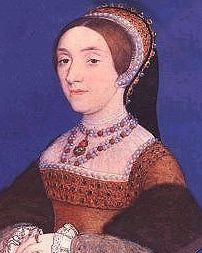Many people have been a significant part of our history, and each is having its own story to tell. Some people showcase an inspiring story of success, while others are famous for many other reasons. Interestingly, there is one person who is known for its fascinating story of reign, followed by her untimely death; this person is no other than the former Queen of England: Catherine Howard.
Who is Catherine Howard?
Catherine Howard was a former Queen of England known for her intriguing life story. Catherine had been queen for only a year from 1540 to 1541 until she was beheaded. Her life became a great story that sparks the interest of many people in the history of England.
Catherine was the daughter of Lord Edmund Howard and Joyce Culpeper. She was also the first cousin of Anne Boleyn and second cousin of Jane Seymour; both of them also became the Queen of England in the 16th century. Despite being a part of a royal bloodline, Catherine’s father was not wealthy, mainly because of their birthright laws.
Lord Edmund Howard and Joyce Culpeper had a total of eleven children, including Catherine. Because of having a small income, their family struggled financially and was forced to ask for help from their relatives. When Catherine grew up, she married Henry VIII of England.
History of Catherine Howard
As mentioned earlier, Catherine Howard is known for her intriguing life story. Historians believe that she was born in Lambeth in 1523, although she does not have any concrete record in history about her date of birth. At a young age, Catherine, along with some of her siblings, were sent to their father’s stepmother during the time of her mother’s death.
During this time, Catherine Howard had a relationship with her music teacher: Henry Mannox. It was believed that Catherine and Mannox had sexual contact, although without having actual intercourse. Their relationship did not continue, and Catherine was then pursued by Francis Dereham.
Francis was a secretary of the Dowager Duchess; he usually went on business trips away from Lambeth. Speculations show that Catherine and Francis became lovers and escalated their relationship, wherein they addressed each other as husband and wife. Like a typical married couple, Catherine became responsible for some of Francis’ belongings, including his money. Their relationship remained hidden in the Dowager Duchess’s eyes, despite Catherine’s roommates being aware of the situation. However, it didn’t take long for the Dowager of Duchess to find out about their relationship, which ended in 1539.
Interestingly, the young Catherine Howard soon met Henry VIII at a Court in the household of the latter’s fourth wife, Anne Cleves. During their meeting at the Court, Henry developed an interest in Catherine. As the days passed, Henry’s interest grew, leading him to send gifts to Catherine.
It didn’t take long for King Henry and Catherine to get married, which took place at Oatlands Palace by Bishop Bonner of London in 1540. During this time, Henry was already forty-nine years old while Catherine was still a teenager. Despite being married to the King, Catherine was considered too young to take part in administrative matters.
However, Catherine’s relationship with the King started to undermine as the latter learned about his wife’s affair with his favorite male courtier: Thomas Culpeper. It was believed that even before Henry and Catherine got married, she already saw Thomas as her lover and considered getting married to him. A love letter was found in Culpeper’s chambers that are believed to have the same hand-writing as Catherine. In 1541, the King received a letter about the various allegations against his wife.
Following this event, Catherine was quickly stripped of her title as queen in late 1541. Less than a month later, the King proceeded with the execution for high treason. Thomas Culpeper was beheaded, along with another alleged affair of Catherine, Francis Dereham, who was hanged, drawn, and quartered.
Moreover, a bill of attainder was introduced by the parliament in early 1542, which stated that Catherine’s action would be punishable by death. Without any formal trial, Catherine was then brought to the Tower and into her prison cell beyond the Traitors’ Gate. Catherine’s execution was scheduled for February 13, 1542, at 7:00 am.
On the day of her execution, it is apparent that Catherine looked scared and had a difficult time climbing the scaffold. After her last words, the executioner quickly proceeded with the execution and beheaded Catherine with a single strike of its axe.

